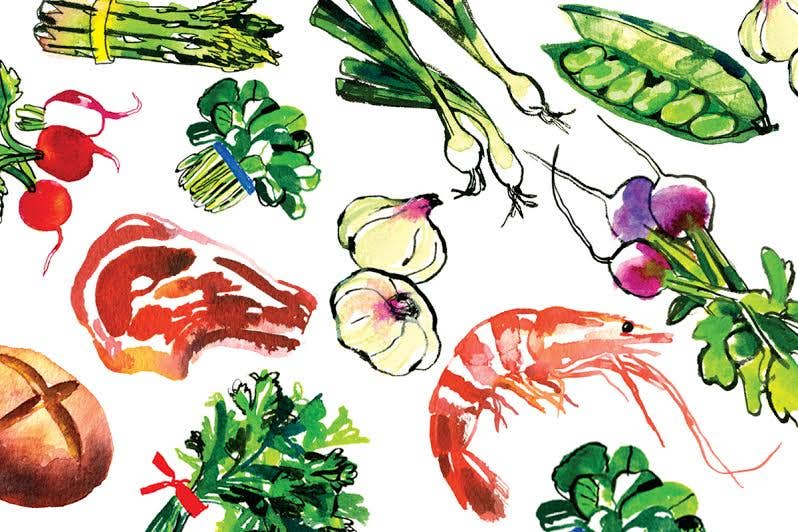
No-Fault Mexican
Rick Bayless, an American who has long had a relationship with Mexico, cooks authentic Mexican food in his two restaurants (the Frontera Grill and Topomabapolo) in—of all places—Chicago. His first book, Authentic Mexican Kitchen _(William Morrow, 1987), was a pleasure to use, and I've enjoyed his cooking on numerous occasions, so I was greatly looking forward to his latest effort (which was written with Deann Groen Bayless and JeanMarie Brownson), _Rick Bayless's Mexican Kitchen: Capturing the Vibrant Flavors of a World-Class Cuisine. I was not disappointed.
The recipes come from Bayless's own kitchen this time, but that doesn't mean he isn't rigorously authentic. It's just that he relaxes his grip on authenticity long enough to recognize the fact that most of his readers live and cook in the United States—and are only human. Instead of presenting us with culinary artifacts that must be reconstructed exactly, he gives us usable recipes that derive from tradition, and he seems confident that the reader will want to follow them closely just because they're good. He tells us much about Mexican ingredients and techniques (and he is a stickler for them), but he doesn't scold us for transgressions that we might be tempted to make. In fact, he graciously shares with us his own transgressions. If this is his Mexican kitchen, it can become ours as well.
In the book's first chapter: "Essential Flavors of the Mexican Kitchen," Bayless offers 15 recipes—sauces, salsas, adobos, achiote seasoning, corn tortillas, and rajas (a seasoned mixture of roasted chiles, onions, and garlic)—each of which he uses as an instructional device. The one for adobo de chile ancho, for example, teaches us how and why to clean, toast, soak, puree, and strain chiles—techniques that one uses over and over again in Mexican cooking. I also appreciated the sidebars, called "Simple Ideas from My American Home," that accompany each "essential" recipe and are also scattered throughout the book. Anyone who cooks knows that wonderful, spontaneous little dishes can spring from happenstance. They often can't be codified as recipes, but can certainly be turned into informal suggestions, as Bayless does here.
Subsequent chapters deal with appetizers and small dishes; salads; rice, beans, and eggs; unusual dishes made of vegetables; an array of soups; informal tortilla-based items; vibrant fiesta foods; beguiling desserts; and wine and margaritas. There's a lot of new material here, even for aficionados. As befits the cuisine, many recipes are complex, but many are reasonably quick and easy. One rather refined example is broiled chipotle chicken with creamy spinach, a dish I made more or less on the spur of the moment for company, and would certainly make again.
Seduced by Maria Robledo's intriguing photographs, I had to try, among other dishes, the slow-simmered fava bean soup with mint and pasilla chile. Made with rustic, ever-thickening fava beans, it was satisfying and delicious—due, in part, to its marvelous chile garnish. Another success was chile-glazed country ribs, which made me long to be at a breezy summer dinner party instead of staring out my window at a snowy New Mexico winterscape. I also found the leftovers of a number of the "essential" sauces to be a great kitchen bonus: Some unused sweet-and-spicy ancho seasoning paste made a knockout posole-turkey stew; some extra simmered guajillo sauce created a better plate of enchiladas than usual.
Bayless's recipes are well written, menu pairings and beverages are suggested, and the author always lets us know how to finish the dish, what part of it can be made in advance, and how it might be varied. The many healthy elements of traditional Mexican cuisine, which may come as a surprise to some readers, are pointed out, but recipes are not, thank heavens, "fat-reduced" or made to fit into some contemporary diet schema. Rather, Bayless pleads the wisdom of eating smaller portions of good food and the rewards of finding a balance between everyday and celebratory foods—an idea with which I have much sympathy.
Keep Reading
Continue to Next Story










